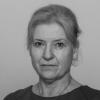Programmaleider Verpleging, Verzorging en Ouderenzorg; bijzonder hoogleraar 'Verpleging en verzorging in de laatste levensfase', Vrije Universiteit / Amsterdam UMC
Publicatie
Publicatie datum
An economic appraisal of the Australian Medical Sheepskin for the prevention of sacral pressure ulcers from a nursing home perspective.
Mistiaen, P., Ament, A., Francke, A.L., Achterberg, W., Halfens, R., Huizinga, J., Post, H. An economic appraisal of the Australian Medical Sheepskin for the prevention of sacral pressure ulcers from a nursing home perspective. BMC Health Services Research: 2010, 10(226)
Lees online
BACKGROUND: Many devices are in use to prevent pressure ulcers, but from most little is known about their effects and costs. One such preventive device is the Australian Medical Sheepskin that has been proven effective in three randomized trials. In this study the costs and savings from the use of the Australian Medical Sheepskin were investigated from the perspective of a nursing home. METHODS: An economic model was developed in which monetary costs and monetary savings in respect of the sheepskin were balanced against each other. The model was applied to a fictional (Dutch) nursing home with 100 beds for rehabilitation patients and a time horizon of one year. Input variables for the model consisted of investment costs for using the sheepskin (purchase and laundry), and savings through the prevented cases of pressure ulcers. The input values for the investment costs and for the effectiveness were empirically based on a trial with newly admitted rehabilitation patients from eight nursing homes. The input values for the costs of pressure ulcer treatment were estimated by means of four different approaches. RESULTS: Investment costs for using the Australian Medical Sheepskin were larger than the monetary savings obtained by preventing pressure ulcers. Use of the Australian Medical Sheepskin involves an additional cost of approximately 2 euro per patient per day. Preventing one case of a sacral pressure ulcer by means of the Australian Medical Sheepskin involves an investment of 2,974 euro when the sheepskin is given to all patients. When the sheepskin is selectively used for more critical patients only, the investment to prevent one case of sacral pressure ulcers decreases to 2,479 euro (pressure ulcer risk patients) or 1,847 euro (ADL-severely impaired patients). The factors with the strongest influence on the balance are the frequency of changing the sheepskin and the costs of washing related to this. The economic model was hampered by considerable uncertainty in the estimations of the costs of pressure ulcer treatment. CONCLUSIONS: From a nursing home perspective, the investment costs for use of the Australian Medical Sheepskin in newly admitted rehabilitation patients are larger than the monetary savings obtained by preventing pressure ulcers. (aut. ref)
BACKGROUND: Many devices are in use to prevent pressure ulcers, but from most little is known about their effects and costs. One such preventive device is the Australian Medical Sheepskin that has been proven effective in three randomized trials. In this study the costs and savings from the use of the Australian Medical Sheepskin were investigated from the perspective of a nursing home. METHODS: An economic model was developed in which monetary costs and monetary savings in respect of the sheepskin were balanced against each other. The model was applied to a fictional (Dutch) nursing home with 100 beds for rehabilitation patients and a time horizon of one year. Input variables for the model consisted of investment costs for using the sheepskin (purchase and laundry), and savings through the prevented cases of pressure ulcers. The input values for the investment costs and for the effectiveness were empirically based on a trial with newly admitted rehabilitation patients from eight nursing homes. The input values for the costs of pressure ulcer treatment were estimated by means of four different approaches. RESULTS: Investment costs for using the Australian Medical Sheepskin were larger than the monetary savings obtained by preventing pressure ulcers. Use of the Australian Medical Sheepskin involves an additional cost of approximately 2 euro per patient per day. Preventing one case of a sacral pressure ulcer by means of the Australian Medical Sheepskin involves an investment of 2,974 euro when the sheepskin is given to all patients. When the sheepskin is selectively used for more critical patients only, the investment to prevent one case of sacral pressure ulcers decreases to 2,479 euro (pressure ulcer risk patients) or 1,847 euro (ADL-severely impaired patients). The factors with the strongest influence on the balance are the frequency of changing the sheepskin and the costs of washing related to this. The economic model was hampered by considerable uncertainty in the estimations of the costs of pressure ulcer treatment. CONCLUSIONS: From a nursing home perspective, the investment costs for use of the Australian Medical Sheepskin in newly admitted rehabilitation patients are larger than the monetary savings obtained by preventing pressure ulcers. (aut. ref)

